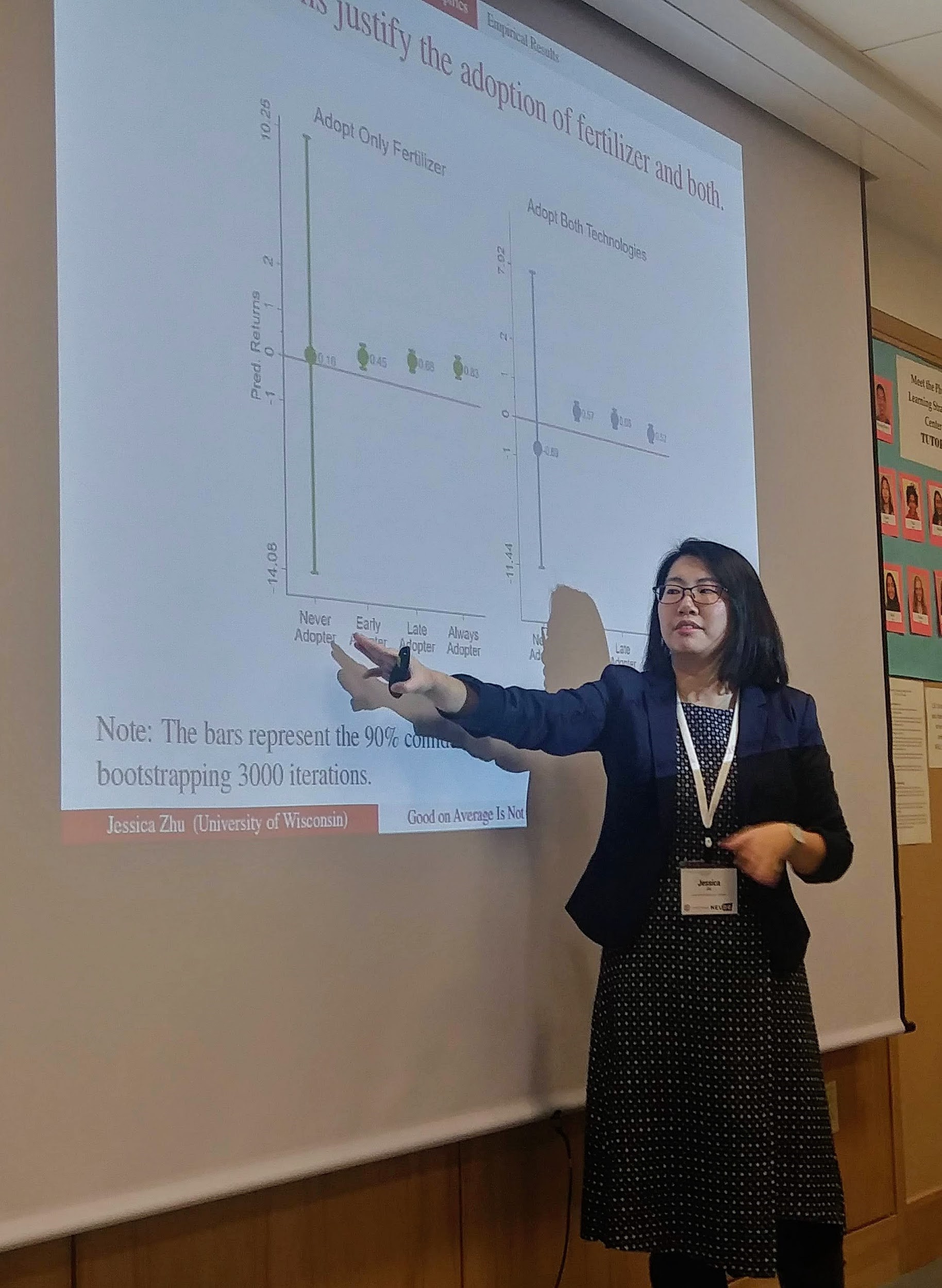Agriculture in developing countries is generally characterized by low yields and profitability due to resource constraints. Therefore, an understanding of the physical, financial, and informational resources that farmers need, and the ways to most effectively access and disseminate those inputs, are crucial for priority setting and policy design. This topic was explored by presenters at the agriculture and risk management sessions of the 2018 North East Universities Development Consortium (NEUDC). Further, conference presenters focused on the heterogeneity of smallholder farmers in developing countries, highlighting the necessity of tailoring agricultural interventions to region- and household-specific conditions.
Financial Inputs
Financial inputs are one of the most important factors for the success of smallholder farmers. Insurance, credit, and subsidies provide farmers with financial access to physical and technical inputs; these inputs in turn allow them to invest in their own business and thereby increase productivity, profitability, and resilience. Emilia Tjernström demonstrated how One Acre Fund’s 1AF intervention, which introduced a market bundle of credit, insurance, and training in Kenya, increased smallholder farmers’ yields and profits. Moreover, she examined the heterogenous effect of this intervention, but in this case there was very little heterogeneity among beneficiaries so there was a consistent positive effect across recipients.
Similarly, Neha Kumar discussed how index insurance (i.e., insurance in which payouts are determined universally based on an index as opposed to individual losses) in Bangladesh encouraged agricultural investment. Although demand for index insurance was found to be price sensitive, insurance can be paired with other tools, such as credit or subsidies, to provide households with greater financial access and give them the opportunity to invest in themselves. Another example of this was presented by Gregory Lane, who described how self-investment can be prompted through the use of credit as catastrophic insurance. His research found that Bangladesh households with access to experimental emergency loan insurance tended to increase agricultural investment and were more resilient to catastrophic shocks.
Physical Inputs
Greater access to physical inputs allows farmers to invest in themselves and improve their livelihoods; the provision of physical inputs, however, should take into account the needs and preferences of the farmers, as well as the context. Jessica Zhu found that in Tanzania, farmers tended to adopt intercropping more readily than fertilizer usage, even though the latter was generally more highly regarded by agricultural experts. Zhu attested that this was because, though intercropping did not increase yields on average, it decreased yield variance. The decrease in risk was more valued by farmers as lower-income households are more risk-averse.
Hope Michelson also looked at the adoption of fertilizer in Tanzania, focusing on the interregional (and sometimes inter-village) heterogeneity in soils. She found that in many cases, farmers were receiving the wrong information regarding fertilizer recommendations. More accurate recommendations for their particular soil type combined with supplied liquidity increased usage of effective fertilizers, thereby increasing yields.
Sarah Kopper found that lowering fertilizer prices alone are not enough for intensification when she studied the national level data from Ethiopia. She demonstrated that households with a constrained labor force used less fertilizer and therefore labor market imperfections affected conditional fertilizer demand. Her research indicated that input policies should incorporate labor activity to improve the use of fertilizer.
Informational and Educational Inputs
The role of extension in agriculture is also very important in disseminating resources and information to farmers. It encourages the adoption of new technology and alters input use to realize gains in productivity. The availability and widespread reach of information and communication technology (ICT) holds implications for agricultural extension programs.
Simrin Makhija assessed the effects of video-mediated agricultural extension provision on farmers’ knowledge and adoption of improved agricultural technologies in Ethiopia. Using a RCT design for three priority crops (teff, wheat, maize) and three technologies (row planting, lower seeding rate, and fertilizer top dressing), she showed that video-mediated extension reached a wider audience than the conventional extension approach; additionally, it led to higher levels of agricultural knowledge and uptake of technologies in the kebeles selected for video-mediated extension.
Through RCTs in Kenya, Giulia Zane showed that mobile phone-based extension services, which provide area-specific information about fertilizers and agricultural lime via SMS, increased farmers’ knowledge of and experimentation with recommended inputs.
Way Forward
In conclusion, the presenters mentioned above (as well as many others at the conference) demonstrated several diverse, innovative methods to improve access to production inputs. They also addressed some of the challenges and factors that affect information dissemination and adoption of new agricultural technologies. As advancements are made in agricultural research, policy makers and researchers must consider the best methods of disseminating the growing knowledge and technology base to smallholder farmers to sustainably improve their livelihoods.


